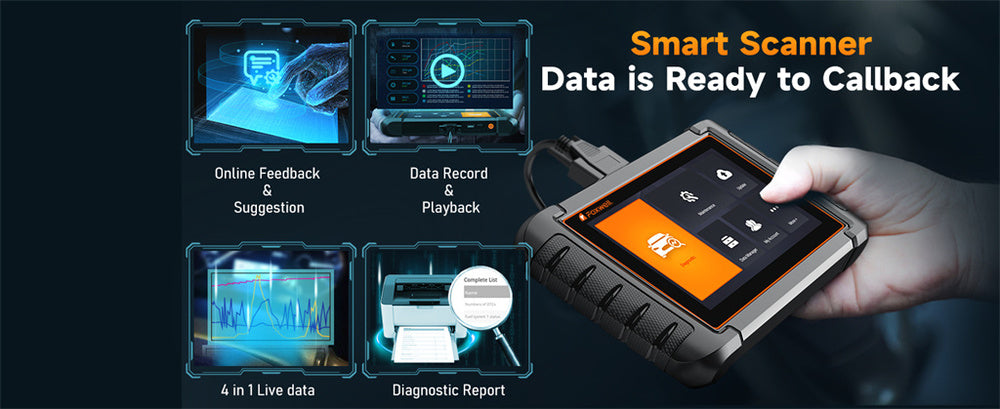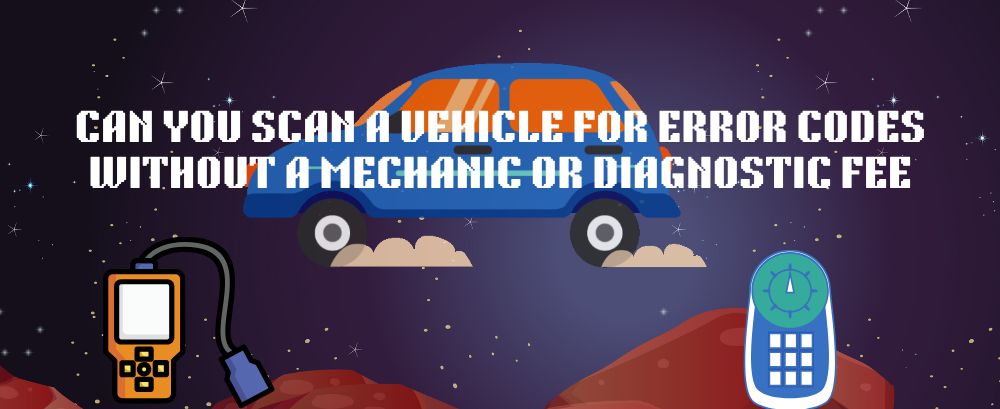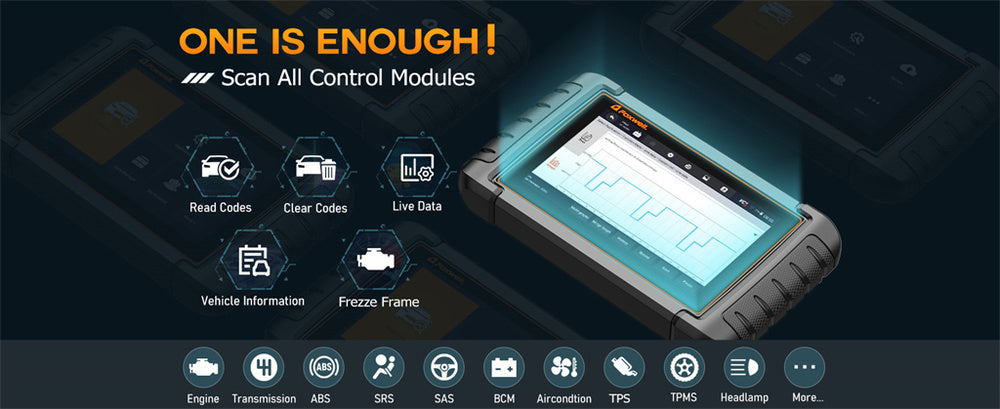With more drivers turning to OBD2 scanners to diagnose vehicle issues independently, it’s natural to wonder: can using one of these scanners actually harm my car?
While scanning error codes yourself can save time and money, the last thing you want is to unintentionally cause damage.
You may have heard mixed reviews—some swear by these scanners, while others worry about possible risks.
So, is using an OBD2 scanner safe? And if there are potential downsides, what should you be aware of? This article will address these questions and offer tips on how to use an OBD2 scanner safely and effectively, helping you to confidently manage your vehicle’s diagnostics without worry.
What Is an OBD2 Scanner and How Does It Work?

An OBD2 (On-Board Diagnostics II) scanner is a tool that connects to your vehicle’s OBD2 port—often located under the dashboard—and interacts with the car’s onboard computer.
This connection allows the scanner to access information from various systems, including the engine, transmission, emissions, and more.
Think of an OBD2 scanner as a “vehicle health monitor.” Its main role is to read diagnostic codes that are already stored in the vehicle’s computer, without modifying or changing any settings.
Much like a doctor checking your vital signs, an OBD2 scanner reads and reports data without interfering with the operation of the vehicle’s systems.
Can Using an OBD2 Scanner Harm Your Vehicle?
For most drivers, the answer is no—using a quality OBD2 scanner will not harm your vehicle. Here’s why:
Read-Only Functionality: Standard OBD2 scanners are designed to retrieve data only. They don’t write, alter, or interfere with any of the car’s settings. It’s like reading a book—you’re only viewing the information, not changing it.
Compatibility with Vehicle Standards: Certified OBD2 scanners are built according to established protocols that ensure safe use across different vehicle models. A high-quality scanner won’t interfere with your car’s software or disrupt its systems.
That said, not all OBD2 scanners are equal. Low-quality or uncertified devices can present some risks, which is why choosing a reputable, well-reviewed product is essential.
Potential Risks of Using Low-Quality OBD2 Scanners
While a high-quality OBD2 scanner is safe, low-quality or uncertified scanners can potentially cause issues. Here’s what to keep in mind:
- Inaccurate Readings: Poorly made scanners may deliver incorrect or incomplete readings, leading to misdiagnoses that could prompt unnecessary repairs or cause you to miss real issues.
- Compatibility Issues: Some low-end scanners may not be fully compatible with newer or less common vehicle models. An incompatible scanner can result in error messages or failed connections.
- Electrical Interference: Although rare, low-quality scanners may cause electrical interference with your vehicle’s systems due to poor design and lack of compliance with industry standards.
To avoid these risks, select a trusted brand’s OBD2 scanner with positive reviews. A reputable device provides accurate, compatible, and safe usage.
Safe Usage Tips for OBD2 Scanners
To ensure safe and effective use of your OBD2 scanner, keep these tips in mind:
- Choose a High-Quality Scanner: Opt for a scanner that meets industry standards. For example, the Foxwell NT809TS is a professional-grade scanner offering advanced features like tire pressure monitoring and ABS/SRS diagnostics. It’s designed for safety, user-friendliness, and compatibility with a wide range of vehicles.
- Check Vehicle Compatibility: Before buying, ensure the scanner is compatible with your specific vehicle model. Not all scanners work on all vehicles, and compatibility issues can lead to frustration or inaccurate readings.
- Follow the Correct Power Protocol: Most scanners require the vehicle’s ignition to be in accessory mode or turned off when first connected.
Avoid connecting or disconnecting the scanner while the engine is running unless the manual specifically allows it. This helps reduce the chance of electrical issues.
- Limit Frequency of Use: Scanning your car’s codes frequently is unnecessary unless troubleshooting specific issues. Excessive use can sometimes stress the OBD port, so it’s best to scan only when the check engine light is on or as part of routine maintenance.
- Avoid Clearing Codes Without Proper Diagnosis: Some scanners allow you to clear error codes, turning off the check engine light. However, it’s crucial to understand what a code means before clearing it, as simply turning off the light without addressing the underlying issue could lead to larger problems.
- Store the Scanner Properly: When not in use, store your scanner in a dry, safe place. Dust, moisture, and extreme temperatures can affect its performance, so proper storage helps ensure it will work well over time.
Common Misconceptions About OBD2 Scanners
There are some widespread myths about OBD2 scanners that cause unnecessary concerns. Here are a few clarified:
“OBD2 Scanners Will Overwrite or Alter Vehicle Data”: This is incorrect. Most OBD2 scanners are read-only, retrieving information without making changes. Unless you’re using specialized reprogramming tools (not typical for general users), an OBD2 scanner won’t alter your car’s data.
“Frequent Use of an OBD2 Scanner Will Damage My Car’s System”: Regular use of an OBD2 scanner won’t damage your car. Scanners are designed for repeated use in diagnostics—just like checking someone’s blood pressure won’t affect their health, using an OBD2 scanner doesn’t harm the vehicle.
“Clearing Codes Fixes the Problem”: Clearing a code only resets the check engine light; it doesn’t solve the underlying issue. If you’re unsure about a specific code, consider consulting a mechanic or researching further rather than just clearing the code.
Conclusion
In summary, using an OBD2 scanner is generally safe and beneficial for vehicle diagnostics, provided you choose a reputable device and follow proper usage practices.
High-quality scanners, like the Foxwell NT809TS, offer reliable, accurate diagnostics without risk to your vehicle. Using an OBD2 scanner can help you quickly understand error codes, allowing you to make informed decisions about repairs and maintenance.
With the right equipment and a few simple precautions, an OBD2 scanner is a powerful tool that can save you time and money by identifying issues early, all while keeping your vehicle in optimal condition without causing any harmful effects.
FAQs
Should the car be running when using an OBD2 scanner?
No, it’s best to have the ignition in the “On” or accessory position without the engine running, unless the scanner’s instructions specifically say otherwise.
Can an OBD2 scanner damage an ECU?
A quality OBD2 scanner will not damage the ECU. It only reads data without altering any settings. However, avoid low-quality or incompatible devices to ensure safety.
Is OBD2 safe to use?
Yes, OBD2 scanners are safe when used correctly. They follow diagnostic standards and do not modify the car’s system, making them a safe choice for vehicle checks.




Leave a comment
This site is protected by hCaptcha and the hCaptcha Privacy Policy and Terms of Service apply.